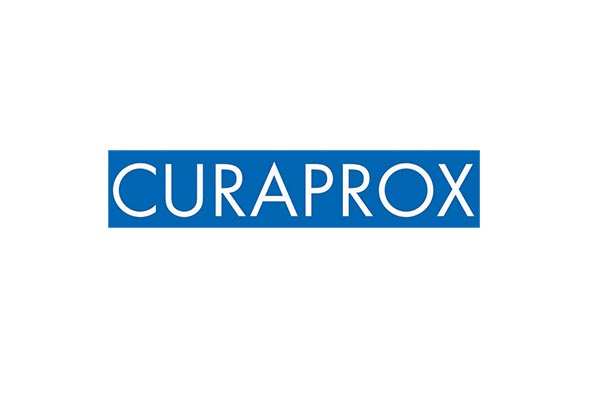The nature of CITROX®
Featured Products Promotional FeaturesPosted by: Dental Design 11th May 2019


As an expert in oral microbiology, Professor David Williams has extensively studied the effects of natural substances on inhibiting microbes from the oral cavity. He discusses the potential benefits of CITROX® as a key ingredient in dental products, enabling patients to combat bacterial plaque, and protect their teeth and gums from oral diseases.
Healthcare products that contain natural ingredients have become very popular among consumers, many of whom favour these solutions over man-made alternatives. This may be due to consumer concerns over possibly negative side effects from the use of artificial substances. As such, some patients have begun seeking natural remedies to treat a wide range of illnesses, including oral diseases such as dental caries, gingivitis, and periodontitis.
There are now a variety of oral hygiene products on the market that contain natural antimicrobial ingredients like CITROX®. These natural antimicrobials are essentially “tried and tested” by nature itself. Unlike conventional antibiotics – which typically target one specific site – the active agents in CITROX® can attack multiple sites of a microbial cell, leading to improved deactivation, and making the agent effective at inhibiting microorganisms known to cause infections in the oral cavity.
I have demonstrated these results in my own laboratory experiments, which also tested CITROX®’s ability to eradicate bacteria in biofilms.[i]These studies – among many others – have helped open up avenues for further research into additional applications of CITROX® throughout the healthcare industry. For instance, my research is now assessing whether CITROX® can prevent biofilm formation on catheters.
CITROX® as a mouth rinse ingredient
As most practitioners are aware, many oral diseases are caused by a build up of bacterial plaque. Rather than create a completely sterile environment, mouth rinses help reduce the number of bacteria within the mouth, thus minimising the likelihood of a patient acquiring infection. Oral bacteria multiply rapidly, so it is important for patients with acute dental problems, or at a higher risk of contracting dental disease, to use a suitable mouth rinse to limit plaque accumulation. There are many mouth rinse products that can be recommended as reliable temporary oral hygiene supplements for these high risk patients.
Mouth rinses containing CITROX® may serve as valuable adjuncts for improving oral hygiene. Research has shown that a combination of chlorhexidine (CHX) and CITROX® (featured in Perio Plus+ products) was demonstrably more effective at inhibiting bacteria, compared to using either of these ingredients alone.
Why recommend Perio Plus+?
The laboratory study my colleagues and I conducted explored a range of different microorganisms, including bacteria and fungi – all of which had varying susceptibilities to the tested mouth rinses. One of these mouth rinses was Perio Plus+, which combines CHX with CITROX® in one unique formula. It was clear that this product was the most effective agent tested against the microorganisms. If these laboratory findings translate to a clinical setting, then Perio Plus+ products could be highly beneficial in helping protect teeth and gums from oral diseases.
Future applications of CITROX®
CITROX® has a plethora of applications within the dental industry and beyond. In the future, it could have value as an antimicrobial ingredient in toothpastes and other denture care products, or it might be used to treat periodontitis, as a solution that is injected into the gingival pockets to protect against bacteria. CITROX® could be implemented as an ingredient in disinfectant hand wash, or for the removal and prevention of biofilms in dental unit waterlines. It is also exciting to think that CITROX® may have value in treating chronic wounds. The agent may even become commonplace as an anti-bacterial solution in food processing, or in food storage to preserve meat.
If a natural ingredient like CITROX® is proven to eradicate biofilm, its future applications are extensive. Only time will tell how far reaching the effects of using CITROX® could be in multiple industries, including dentistry.
For more information please call 01480 862084, email info@curaprox.co.ukor visit www.curaprox.co.uk

Biography:
Professor David Williams is a microbiologist with over 30 years of research experience spanning across several disciplines in microbiology – including food microbiology, oral microbiology and microbial biofilms. He currently leads the Microbial Disease Research Unit of the School of Dentistry at Cardiff University.
Professor Williams has applied his research to the detection of biofilm microorganisms and approaches to eradicate them from environments where their presence can lead to human infection. He has been extensively involved in the study of biofilms associated with infections of the mouth, lower airways, chronic wounds and urinary tract. Professor Williams’ research into biofilm microorganisms has highlighted their associated antimicrobial resistance (AMR; >1000-fold less susceptible than the free living counterparts) and their recalcitrance to removal in clinical infections. Importantly, it is now estimated that over 65% of hospital infections have a biofilm origin. Biofilm-mediated AMR is multifactorial and involves: 1) the presence of the biofilm matrix components which impede movement of antimicrobials and their access to embedded microbes, 2) a reduced activity of biofilm cells, and 3) the close proximity of biofilm cells which promotes exchange of genetic resistant traits, as well as ‘sensitive cells’ being protected by locally secreted molecules (e.g. β-lactamases etc.).
Given the problems outlined above, Professor Williams’ research has focused on the in vitro modeling of biofilms and susceptibility testing, the study of microbial interactions in biofilms, and the development and evaluation of novel treatments for biofilms – including new chemistries and surface modified biomaterials. To facilitate his biofilm research, Professor Williams has ongoing and close collaboration with clinical researchers, material scientists, engineers, chemists and industrial partners.
[i]Malic, S., Emanuel, C., Lewis, M. A. O. and Williams, D. W. (2013) Antimicrobial activity of novel mouthrinses against planktonic cells and biofilms of pathogenic microorganisms. Microbiology Discovery. 1: 11.
No Comments
No comments yet.
Sorry, the comment form is closed at this time.



